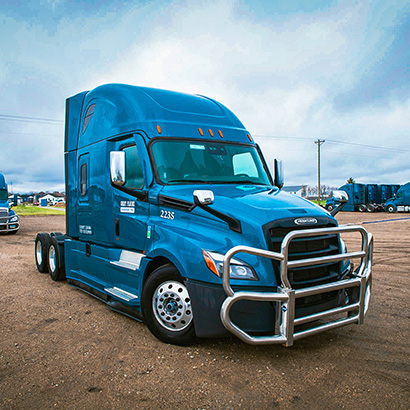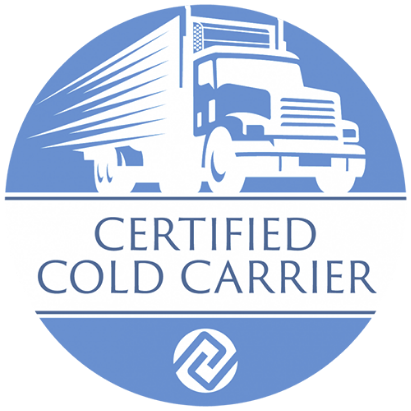Menu
- Home
- Drivers
- Capabilities

logistic experts
- About
- Contact Us
- Get Quote





The CSA score is calculated based on three factors: Compliance, Safety, and Accountability. Each carrier’s CSA score is available in a public database maintained by FMCSA. The purpose of the CSA score is to identify high-risk carriers so they can be targeted for safety interventions and reduce their risks.
The ultimate goal is to improve the safety of commercial vehicles and reduce crashes, injuries, and fatalities. Factors that are factored into a company’s CSA score include inspections, crashes, driver fitness, hours-of-service compliance, vehicle maintenance, and hazardous materials compliance. To improve the safety of commercial motor vehicles, it is necessary to have a strong CSA score. Read on to learn more about CSA Scores and how you can improve yours.
One way to improve your Compliance, Safety, and Accountability (CSA) score is by ensuring that all drivers in your fleet are adequately trained and up-to-date on safety procedures. Accountable drivers are less likely to be involved in accidents or to incur violations, which will help to improve your CSA score.
Furthermore, regular safety audits can help identify potential areas of concern before they lead to an accident or violation. By taking steps to improve compliance and safety within your fleet, you can see a significant improvement in your CSA score. This, in turn, will result in lower insurance rates and improved operational efficiency.
There are 7 BASICs that make up your CSA score: Unsafe Driving, Crash Indicator, Hours-of-Service Compliance, Driver Fitness, Controlled Substances/Alcohol, Vehicle Maintenance, and Hazardous Materials Compliance.
Two types of violations can occur within the CSA score: critical and non-critical. Critical violations are more severe and often result in a crash. Non-critical violations don’t usually result in a crash but could if not corrected. Critical violations will get you more points than non-critical violations.
You can ensure a good CSA score by staying up to date on compliance with the DOT requirements, practicing safe driving habits, and being held accountable for your actions. If you have a violation, work on correcting it, so it doesn’t happen again. A good CSA score is essential for the safety of yourself and others on the road.
Unfortunately, organizations also face several challenges when it comes to improving their CSA scores, including:
Compliance: There are a lot of rules and regulations involved in CSA compliance, which can make it difficult for organizations to stay up-to-date. Furthermore, changes to the CSA standards can be challenging to keep track of. As a result, organizations often find themselves playing catch-up when it comes to compliance.
Safety: Compliance is essential, but safety is the bottom line when it comes to CSA scores. Organizations need to ensure that their drivers follow best safety practices and that their vehicles are in good condition. Unfortunately, this can be difficult to do on a consistent basis.
Accountability: Perhaps the biggest challenge facing organizations regarding CSA scores is accountability. Drivers need to be held accountable for their actions, but so do dispatchers, fleet managers, and others. It can be difficult to ensure that everyone works together towards the same goal of improving the organization’s CSA score.
The improvement of CSA scores poses a number of challenges for organizations. Despite these challenges, you can improve your score by focusing on compliance, safety, and accountability.
The use of technology can help improve all three aspects of a CSA Score. Compliance can be improved by using technology to track employee compliance with policies and procedures. Safety can be enhanced by using technology to monitor workplace conditions and identify hazards. Accountability can be improved by using technology to document employee work hours and performance. By using technology to improve compliance, safety, and accountability, organizations can create a safer and more efficient workplace.
Although a CSA score is not the only factor that is considered when targeting high-risk carriers, it is an important tool that can be used to improve safety. The ultimate goal of the CSA program is to reduce crashes, injuries, and fatalities. All commercial motor vehicle industry stakeholders have a role to play in improving safety.
We encourage you to visit the FMCSA website to learn more about how your company can improve its CSA score and make transportation safer for everyone.

M-F 7AM–5PM

M-F 7AM–5PM
Great Plains Transport is a North Dakota trucking company featuring refrigerated freight, cargo, and dedicated transportation services while offering long haul OTR truck driving jobs in 48 states.
Great Plains Transport Inc
Address: 200 1st Ave SE, Mapleton, ND 58059
Phone: (701) 281-3006

